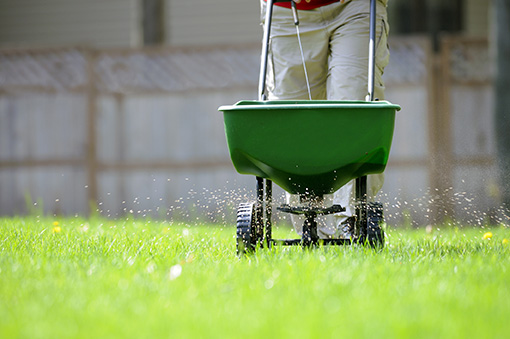
Broadcast Spreader Calibration
Effective lawn care requires accurate granular product application. Broadcast spreader calibration is necessary for an effective application. The following procedures are one example of effective spreader calibration:

Effective lawn care requires accurate granular product application. Broadcast spreader calibration is necessary for an effective application. The following procedures are one example of effective spreader calibration:

Thatching your lawn is a very effective way to rejuvenate an older lawn or help to establish a new lawn. However, an understanding of the benefits and potential problems created by thatching are important to insure a positive result. In this article, we’ll breakdown our best tips.

Lawn insects come in many shapes and sizes but basically, they either feed on the grass stems or the roots. Knowing who you are dealing with is critical in effective insect control. There are different products and different timings recommended for different insects. There are both preventative and curative products currently available.

Weeds come in many shapes and sizes but more importantly, they have different growth habits. These growth habits determine the timing and best means of control. Some, such as crabgrass, are summer annuals which germinate, grow, and die within the same year. Others are winter annuals, such as annual bluegrass, that germinate in the late summer, live through the winter, reseed themselves, and die out the following summer. Weed Control Products These annual grassy weeds are best controlled with preemergent products applied prior to seed germination. Most products designed to control weed seed germination also interfere with the germination of desirable grass seed. There are, however, a few products available that are specifically designed to be applied at the time

If you wait until the grass is growing to plan your lawn care program in the spring, you waited too long. Look at your lawn. Are you seeing the results of drought or insect damage? The two are often confused. Are you seeing the brown remnants of annual crabgrass? Are you seeing perennial broadleaf weeds that will inevitably be back again next year? Was Japanese Stilt Grass an issue? Does your lawn appear to be hungry or unhealthy? These are all issues that should be considered and prioritized when developing a plan of action for your lawn care program BEFORE the next growing season.

Winter is almost here! Is your backyard ready to face it? All through spring, summer, and fall your outdoor oasis serves as your nature resort, away from the hectic pace of the outside world. Come winter and it becomes the most neglected space. Of course, the cold does make it a tough time to go out for yard maintenance. But a little push to your will can give you a head start for when spring arrives. This year prep for spring while you protect your outdoor lawn and garden through the winter months.

Soil testing is the first step in determining nutrient availability. A soil analysis provides the levels of all the major (macro) nutrients necessary for turf establishment and development.

Soil compaction affects every aspect of turf quality. Addressing compaction is an important part of effective lawn management. It should be understood that there is no one product or procedure that can transform a poor quality lawn. It is rather the cumulative total of doing more right than wrong. Compaction relief is one step on the road to a healthy lawn.

In the fall, more than any other time of year, your lawn manufactures carbohydrates. It manufactures these carbohydrates in the green leaves. It uses these carbohydrates for energy to recover from summer stress and develop through the fall. So, how can you prepare or fertilize your lawn properly? We’ll tell you in this article!

Someone once said “you can grow grass on a rock, just give it what it needs,” but the quality of your lawn starts with the soil. Turf is sustained by the water and nutrients it pulls from the soil. The qualities of the soil, both physical and chemical, contribute to moisture and nutrient availability.